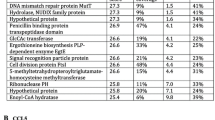Abstract
Host–pathogen interactions involve a complex interplay between host and pathogen factors, resulting in either host protective immunity or establishment of disease. One of the hallmarks for disease progression is host tissue destruction. The first host surface to interact with the opportunistic respiratory fungal pathogen, Aspergillus fumigatus, is the airway epithelium. Unravelling the mechanisms involved in airway epithelial cell damage by A. fumigatus is essential to understanding the establishment and progression of infection in the host. Although host cell damage can be measured in vitro by indirect cell lysis assays, here, we describe an automated, simple, and low-cost assay to directly visualize and quantify epithelial cell line damage after challenge with A. fumigatus. We employ the previously characterized tissue noninvasive A. fumigatus ΔpacC mutant to demonstrate the quantitative difference in cell damage relative to its parental tissue invasive strain. This assay is easily scaled up for high-throughput screening of multiple Aspergillus mutants and can be adapted to suit diverse host cell lines, different time points of infection, challenge with other microbes, and drugs or novel compounds.
Access this chapter
Tax calculation will be finalised at checkout
Purchases are for personal use only
Similar content being viewed by others
References
Bongomin F, Gago S, Oladele R, Denning D, Bongomin F, Gago S et al (2017) Global and multi-National Prevalence of fungal diseases—estimate precision. J Fungi 3(4):57
Croft CA, Culibrk L, Moore MM, Tebbutt SJ (2016) Interactions of Aspergillus fumigatus conidia with airway epithelial cells: a critical review. Front Microbiol 7:472
Osherov N (2012) Interaction of the pathogenic mold Aspergillus fumigatus with lung epithelial cells. Front Microbiol 3(SEP):1–9
Bertuzzi M, Icheoku U, van Rhijn N, Hayes G, Denning D, Osherov N et al (2018) Anti-aspergillus activities of the respiratory epithelium in health and disease. J Fungi 4(1):8
Takahashi-Nakaguchi A, Sakai K, Takahashi H, Hagiwara D, Toyotome T, Chibana H et al (2018) Aspergillus fumigatus adhesion factors in dormant conidia revealed through comparative phenotypic and transcriptomic analyses. Cell Microbiol 20(3):e12802
Bidula S, Sexton DW, Yates M, Abdolrasouli A, Shah A, Wallis R et al (2015) H-ficolin binds Aspergillus fumigatus leading to activation of the lectin complement pathway and modulation of lung epithelial immune responses. Immunology 146(2):281–291
Gravelat FN, Beauvais A, Liu H, Lee MJ, Snarr BD, Chen D et al (2013) Aspergillus Galactosaminogalactan mediates adherence to host constituents and conceals hyphal β-glucan from the immune system. Doering TL, editor. PLoS Pathog 9(8):e1003575
Jensen K, Lund KP, Christensen KB, Holm AT, Dubey LK, Moeller JB et al (2017) M-ficolin is present in Aspergillus fumigatus infected lung and modulates epithelial cell immune responses elicited by fungal cell wall polysaccharides. Virulence 8(8):1870–1879
Levdansky E, Kashi O, Sharon H, Shadkchan Y, Osherov N (2010) The Aspergillus fumigatus cspA gene encoding a repeat-rich Cell Wall protein is important for Normal conidial cell wall architecture and interaction with host cells. Eukaryot Cell 9(9):1403–1415
Kogan TV, Jadoun J, Mittelman L, Hirschberg K, Osherov N (2004) Involvement of secreted Aspergillus fumigatus proteases in disruption of the actin fiber cytoskeleton and loss of focal adhesion sites in infected A549 lung Pneumocytes. J Infect Dis 189(11):1965–1973
Tomee JFC, Wierenga ATJ, Hiemstra PS, Kauffman Netherlands HF (1997) Proteases from Aspergillus fumigatus induce release of proinflammatory cytokines and cell detachment in airway epithelial cell lines. J Infect Dis 176(1):300–303
Sharon H, Hagag S, Osherov N (2009) Transcription factor PrtT controls expression of multiple secreted proteases in the human pathogenic mold Aspergillus fumigatus. Infect Immun 77(9):4051–4060
Bertuzzi M, Schrettl M, Alcazar-Fuoli L, Cairns TC, Muñoz A, Walker LA et al (2014) The pH-responsive PacC transcription factor of Aspergillus fumigatus governs epithelial entry and tissue invasion during pulmonary aspergillosis. Noverr MC, editor. PLoS Pathog 10(10):e1004413
Schindelin J, Arganda-Carreras I, Frise E, Kaynig V, Longair M, Pietzsch T et al (2012) Fiji: an open-source platform for biological-image analysis. Nat Methods 9(7):676–682
Author information
Authors and Affiliations
Corresponding author
Editor information
Editors and Affiliations
Rights and permissions
Copyright information
© 2021 Springer Science+Business Media, LLC, part of Springer Nature
About this protocol
Cite this protocol
Rahman, S., Thomson, D.D., Bertuzzi, M. (2021). Automated Quantitative Analysis of Airway Epithelial Cell Detachment Upon Fungal Challenge. In: Bignell, E. (eds) Host-Fungal Interactions. Methods in Molecular Biology, vol 2260. Humana, New York, NY. https://doi.org/10.1007/978-1-0716-1182-1_16
Download citation
DOI: https://doi.org/10.1007/978-1-0716-1182-1_16
Published:
Publisher Name: Humana, New York, NY
Print ISBN: 978-1-0716-1181-4
Online ISBN: 978-1-0716-1182-1
eBook Packages: Springer Protocols




